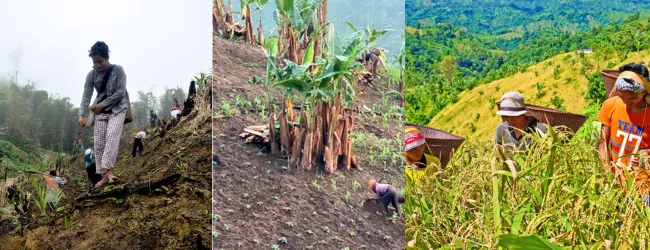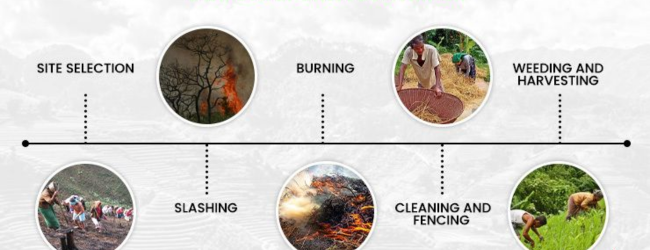Table of contents
- What is Jhoom Farming?
- Significance of Jhoom Farming in India
- How Jhoom Farming is Practised: Step-by-Step
- Jhoom Farming Statistics in India
- Regions Where Jhoom Farming is Prevalent
- Why Jhoom Farming is Still Practised?
- Benefits of Jhoom Farming
- Challenges and Limitations
- Business Opportunities in Jhoom Farming
- Government Support & Alternatives
- Modern Alternatives to Jhoom Farming
- Conclusion
- Frequently Asked Questions (FAQs)
Jhoom farming, also known as shifting cultivation, is a traditional and age-old farming practice in India, mostly seen in the hilly regions of the North-East. Despite being less talked about, this method of agriculture holds immense cultural, environmental, and economic significance. Let’s explore what Jhoom farming is, how it works, its pros and cons, and why it still matters today.
What is Jhoom Farming?

Jhoom farming (or slash-and-burn agriculture) is a method of cultivation where farmers clear a patch of forest by cutting and burning trees and vegetation. They then grow crops on the cleared land for a few years until the soil loses fertility, after which they move to a new area and repeat the process.
🔍 Key Features:
- Region: Common in North-Eastern states like Nagaland, Mizoram, Manipur, Tripura, Meghalaya, and Arunachal Pradesh.
- Also Known As: Slash and burn farming, shifting cultivation.
- Main Crops: Rice, maize, millets, vegetables, and tubers.
- Cycle: Usually 2–3 years of cropping followed by 10–15 years of fallow period (natural regeneration).
Significance of Jhoom Farming in India
✅ Cultural Importance
- Practised by tribal communities for generations.
- Tied closely to local traditions and rituals.
✅ Ecological Value
- Promotes biodiversity due to the rotation of cropping areas.
- Allows forests to regenerate naturally during the fallow period.
✅ Economic Role
- Acts as a subsistence farming method in remote tribal areas.
- Requires no machinery or heavy investment.
How Jhoom Farming is Practised: Step-by-Step
| Stage | Description |
|---|---|
| 1. Site Selection | Chosen based on soil fertility, water availability, and accessibility. |
| 2. Slashing | Forest vegetation is cut down, usually before dry season. |
| 3. Burning | Seeds are broadcast directly without ploughing. |
| 4. Sowing | Seeds are broadcasted directly without ploughing. |
| 5. Harvesting | Crops are harvested manually after a season or two. |
| 6. Migration | The cut vegetation is left to dry and then burned to clear the land and add nutrients. |
💡 Pro Tip: If you want to start a Business but have too many doubts, connect with a Business expert from Boss Wallah for guidance – Check Out
Jhoom Farming Statistics in India
| Parameter | Details |
|---|---|
| Estimated Area (2024) | ~3 million hectares (mostly NE India) |
| Active Households | 4.5 lakh tribal households |
| Crop Yield | ~1–2 tonnes per hectare |
| Contribution to Local Economy | 20% of food supply in tribal regions |
(Source: Ministry of Agriculture & North Eastern Council Reports)
ALSO READ | Banana Farming: Step-by-Step Guide to Successful Harvests
Regions Where Jhoom Farming is Prevalent
- Nagaland: About 60% of the rural population is involved.
- Mizoram: 85% of cultivators practice Jhoom.
- Arunachal Pradesh: Common in remote villages.
- Meghalaya, Tripura, Manipur: Practised in forest belts.
Why Jhoom Farming is Still Practised?
- Limited access to modern agriculture.
- Deep cultural connection.
- Land ownership and community-based farming system.
- Natural fertiliser through ash from burned vegetation.
Benefits of Jhoom Farming
- Low input cost.
- Minimal environmental pollution.
- Resilience to climate change due to diverse crops.
- Enables forest regeneration during fallow cycles.
Challenges and Limitations

- Deforestation and soil erosion due to frequent burning.
- Low productivity compared to modern farming.
- Shortening fallow periods reduces land recovery.
- Limited market access for surplus produce.
Business Opportunities in Jhoom Farming
Despite being traditional, Jhoom farming can be economically viable when integrated with local markets and modern support systems:
💡 Income Sources:
- Primary Crop Sale: Rice, maize, vegetables, and millets.
- By-products: Bamboo, medicinal herbs, and honey from nearby forests.
- Eco-tourism: Agritourism in tribal villages to promote culture.
- Value Addition: Processing millets, making bamboo products.
Case Study: Zizira in Meghalaya
- Zizira partners with tribal farmers to sell turmeric, ginger, and Lakadong spice blends.
- Farmers earn 3x more by processing and selling directly via e-commerce.
- Visit: https://www.zizira.com
Government Support & Alternatives
| Scheme | Benefit |
|---|---|
| Jhum Improvement Programme | Grants and training to improve shifting cultivation. |
| Mission Organic Value Chain Development | For organic certification of tribal produce. |
| ICAR-NEH Region | Research on sustainable alternatives like agroforestry. |
ALSO READ | Permaculture Farming: A Comprehensive Guide
Modern Alternatives to Jhoom Farming
- Agroforestry: Combining tree cultivation with crops.
- Terrace Farming: Sustainable for hilly areas.
- Organic Farming: Enhancing soil fertility naturally.
- Integrated Farming: Combining fishery, poultry, and crop farming.
Need Expert Guidance?
Starting a business can be challenging, but you don’t have to do it alone! At Boss Wallah, our 2,000+ business experts are ready to provide valuable insights and guidance. Whether you need help with marketing, finance, sourcing, or any other area of any business, our business experts are here to help you succeed
Confused about Which Business to Start?
Want to start your own business but unsure which one to choose? Explore Boss Wallah, where you’ll find 500+ courses by successful business owners, featuring practical, step-by-step guides on starting and growing various businesses.
Find your perfect business idea today
Conclusion
Jhoom farming may be traditional, but it remains deeply rooted in the lifestyle and survival of India’s tribal communities. With proper support, sustainable alternatives, and market linkage, this practice can be improved rather than entirely replaced. Understanding Jhoom farming is key to appreciating the balance between environment, economy, and culture in India’s Northeast.
Frequently Asked Questions (FAQs)
1. What is Jhoom farming?
Jhoom farming is a shifting cultivation method involving cutting and burning forests to grow crops.
2. Where is Jhoom farming mostly practised?
It is common in North-Eastern India — Nagaland, Mizoram, Arunachal Pradesh, and Meghalaya.
3. Why do farmers burn the vegetation?
Burning adds nutrients to the soil through ash and clears the land.
4. Is Jhoom farming legal in India?
Yes, but efforts are being made to regulate and modernise it for sustainability.
5. What are the main crops in Jhoom farming?
Rice, millets, vegetables, tubers, and maize.
6. How long is the land left fallow in Jhoom farming?
Traditionally, 10–15 years, but now often just 2–3 years due to land pressure.
7. What are the risks of Jhoom farming?
Deforestation, soil erosion, and low productivity.
8. Can Jhoom farming be profitable?
Yes, especially with market linkage, by-product sale, and value addition.
9. Is there government support for Jhoom farmers?
Yes, through schemes like the Jhum Improvement Programme and Mission Organic Farming.
10. What are sustainable alternatives to Jhoom farming?
Agroforestry, terrace farming, and integrated farming systems.


